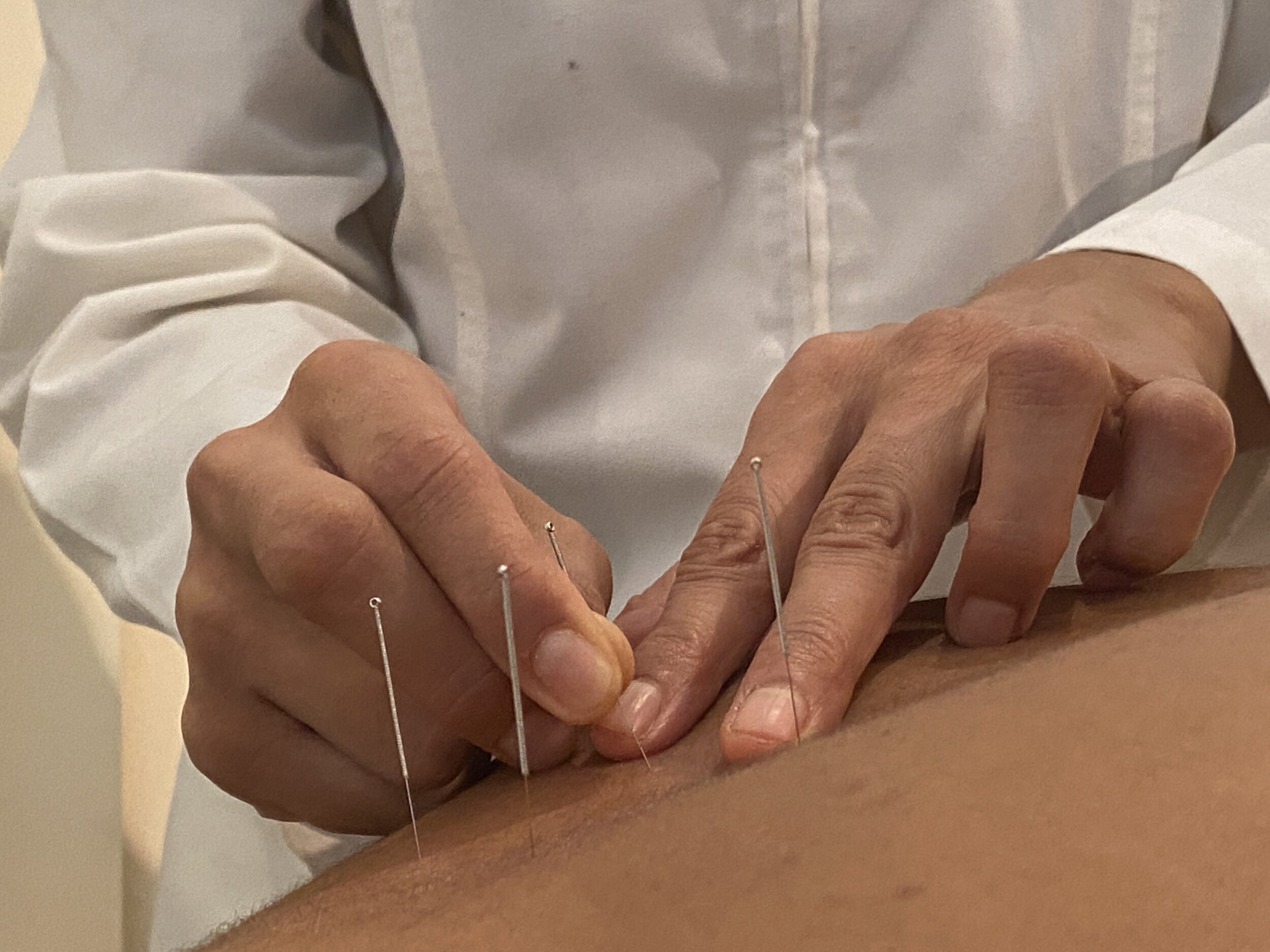
ACUPUNCTURE
All of acupuncture's laws must first be rooted in the spirit.
— from the Ling Shu (Spiritual Pivot)

What I offer:
When you come for acupuncture treatment, the first session is devoted to gathering your history, conducting assessments, and beginning treatment. After we meet for the first session, I will make recommendations to you about what a course of treatment may look like. For example, I may suggest to you to come for acupuncture once a week for 6 weeks, and may make some lifestyle recommendations, recommend supplements or herbs, and possibly give you some points to stimulate on your own at home during the week. While it is impossible to know exactly how many treatments a given person will need, I will have a better sense of that once we do the first intake. For some acute conditions, treatments twice a week for two or three weeks may suffice. For more chronic conditions, regular treatments over the course of several months may be needed. In general, for most people, with exceptions, at least six weekly sessions are needed to get a sense of how the treatment is working and to reassess. On some occasions, one single treatment will yield dramatic effects and a person may feel they do not need to come back. This is entirely possible! Yet it is not the expectation I would set up for anyone. In thinking about acupuncture, you might compare it to physical therapy or psychotherapy. In both those cases, there is a commitment to a process. The same is true for acupuncture. As we work to shift energetic patterns in the body, consistent treatments over time will generally yield the greatest benefits.
What is Acupuncture?
Acupuncture is one of the oldest therapeutic methods known to humanity that is still in widespread practice today. No one knows exactly how long acupuncture has existed, but archaeological evidence suggests it has been around for well over 2000 years!
The practice of acupuncture is based on an understanding that our health - our physical, mental/emotional health, i.e., the functioning of our bodies and minds - depends upon the flow of Qi in our bodies.
What it Qi?
While the word “qi” is not easily translated into English, one way to think of it is vital life force energy. The Chinese character for Qi is composed of two radicals - one referring to steam or vapor, and the other referring to rice. It’s often described as the steam coming off of a pot of cooking rice. That is Qi. It is the animating force of life.
Qi, or vital energy, moves through our entire body, and, there are specific pathways in which the energy is channeled, and flows. Imbalances in the flow of our qi can result in various kinds of physical, mental and emotional symptoms, from subtle and mild (e.g., feeling a bit tired in the afternoons, having difficulty relaxing, getting bloated easily….) to full blown illness and disease.
Acupuncture treatment involves regulating the flow of qi through the channels of the body, to promote greater balance. If the qi is stuck in a particular area, the treatment may involve moving or coursing the qi to affect those areas, and if the qi is depleted in an area, the treatment will involve fortifying or tonifying to support those areas. Very often, a combination of these imbalances exist, and so a treatment course is designed to address the various manifestations of the imbalance.
What is an acupuncture point?
Points are places on the body surface from which there is transformation and transportation of information, regulation of channel and organ function, irrigation of surrounding tissues, and connectivity to the channel system as a whole.
- Dr. Wang Ju-Yi
How are acupuncture points stimulated?
The most common way to stimulate acupuncture points is through the use of very fine needles that are inserted into the body at specific points and stimulated, in order to regulate the qi.
Other traditional methods of stimulating acupuncture points include moxibustion (a form of heat therapy, using the herb artemisia vulgaris, also known as mugwort), touch (both strongly, with acupressure, or with a light-touch energetic method), essential oils, tuning forks, magnets, seeds, and even visualization. As the Chinese medicine saying goes, “where the mind goes, the qi follows.”
There are hundreds of acupuncture points on the body, each with specific functions and effects, and every particular combination of points has its own unique effects as well.
The treatment a patient is given is determined based on the quality of their qi and the way their qi is moving and operating (assessed using a combination of diagnostic measures including feeling the pulses, palpating the channels, looking at the tongue, observing the patient as a whole, and listening to the patient, closely and deeply.
From a biomedical point of view, there have been various findings about what happens during and after acupuncture treatment. The enhancement of feel-good hormones and neurotransmitters and the regulation of the nervous system, promoting a parasympathetic state in which rest and healing can occur, are just two of the many benefits documented through modern scientific research. The other kind of evidence - the 2000 year old kind! - speaks for itself.

